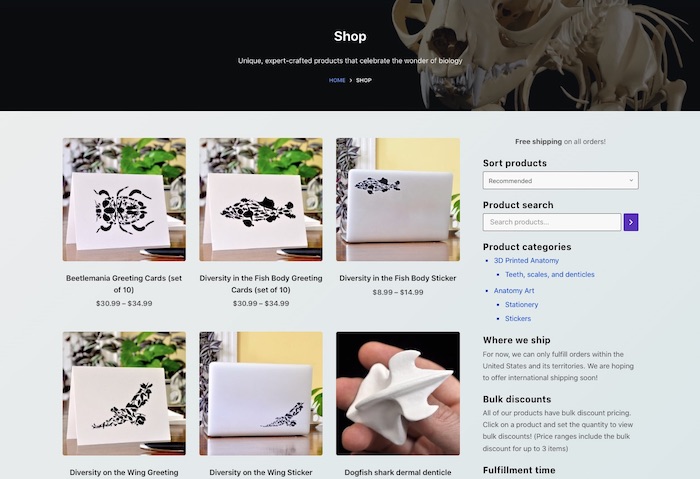
We are thrilled that spring has finally arrived (in the northern hemisphere, at least) and hope that all of you are taking maximum advantage of the sights and smells of spring! But we are even more excited to share with you all that the 3D Anatomy Studios shop is now OPEN! Just as the beautiful blooms of spring are the result of bulbs planted the previous fall, our shop is the culmination of many months of work, with roots reaching back to the summer of 2021.
We’ve been steadily laying the foundation for what we envision 3D Anatomy Studios will achieve over the coming months and years and our Shop puts into action at least three aspects of this larger vision: (1) delivering unique products that celebrate the wonder of biology, (2) ensuring that our products meet our customers’ (and our) highest expectations of quality by building direct relationships with our customers, and (3) making environmentally sustainable decisions every step of the way, even before our first sale.
In this monthly update we’ll share more about each of these aspects of our vision for 3D Anatomy Studios and the steps that brought us to this important milestone.
Unique products that celebrate biology
Since our first tweet on April 7, 2021 (yes, we also can’t believe that it’s been over a year!), we have been sharing illustrations and 3D digital designs created by our members with our ever-growing community on Twitter, Facebook, and Instagram. What we’ve created has been largely guided in part by what we find most compelling about anatomy, evolution, organismal biology, and the diversity of life on Earth.
Illustrations and digital designs created by our members, now showcased in our Portfolio with large format versions and full descriptions.
We wanted to bring these designs into the physical world as products that would bring joy to our followers and customers, allow them to express their interest in and passion for biology with colleagues, friends, and family, and give people new tactile experiences with animal anatomy and function. To fulfill these objectives, we chose the following for our first products: removable vinyl stickers featuring our members’ illustrations, greeting cards made from 100% recycled paper also featuring our members’ illustrations, and scaled up, 3D printed replicas of anatomical structures.
When it comes to sharing an illustration in a physical form, it doesn’t get much more simple than a sticker. And stickers are an easy way to turn a water bottle, laptop, or any other surface into a canvas of individual expression. With so many great designs, it was hard to choose which to start with. But we eventually settled on Tiktaalik Spells Evolution by Tim Sosa, and Diversity in the Fish Body and Diversity on the Wing by Michael Fath.
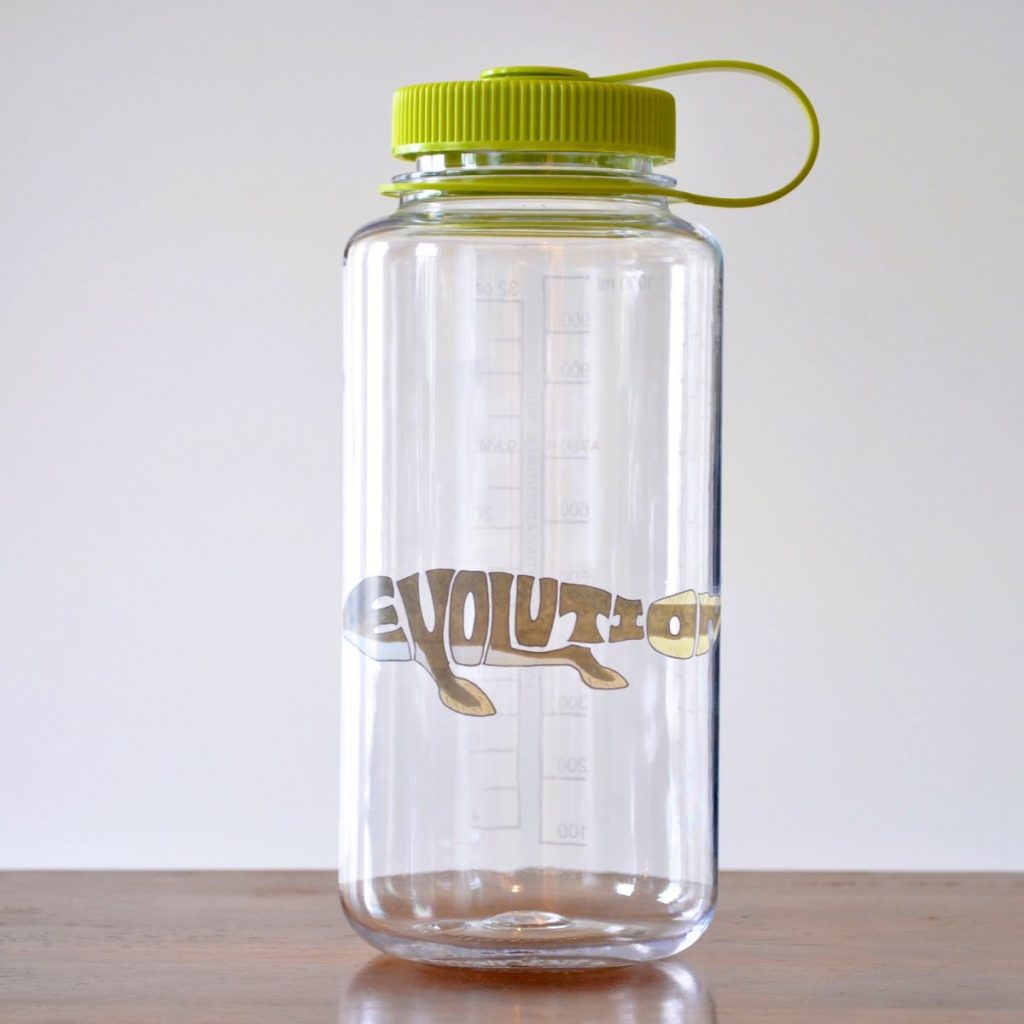
Our Tiktaalik Spells Evolution design, available as a sticker and greeting card, is a great example of how we are applying our knowledge and experience as organismal and evolutionary biologists to create accessible designs that communicate the wonder of natural history. Although we live, breathe, and eat on land today, if you were to go back some 400 million years you would find our ancestors living their whole lives comfortably underwater. This was a remarkable transition in our evolutionary history (called the “water-to-land transition”) and the lineage of fish that evolved the ability to leave the water and walk on land gave rise to the clade called tetrapods (meaning ”four feet”), which includes amphibians, birds, reptiles, and mammals.
Although many fossils have been found that belong to lineages close to this water-to-land transition (e.g., Acanthostega, Ichthyostega, Tulerpeton), Tiktaalik is regarded as the fossil that currently best represents this transition because it has traits that put it right on the cusp between entirely aquatic fish and entirely terrestrial tetrapods. That is, Tiktaalik is truly intermediate with a lifestyle that was likely amphibious, living both above and below water. So when we considered what taxon most typified evolution to us, Tiktaalik was a natural choice.
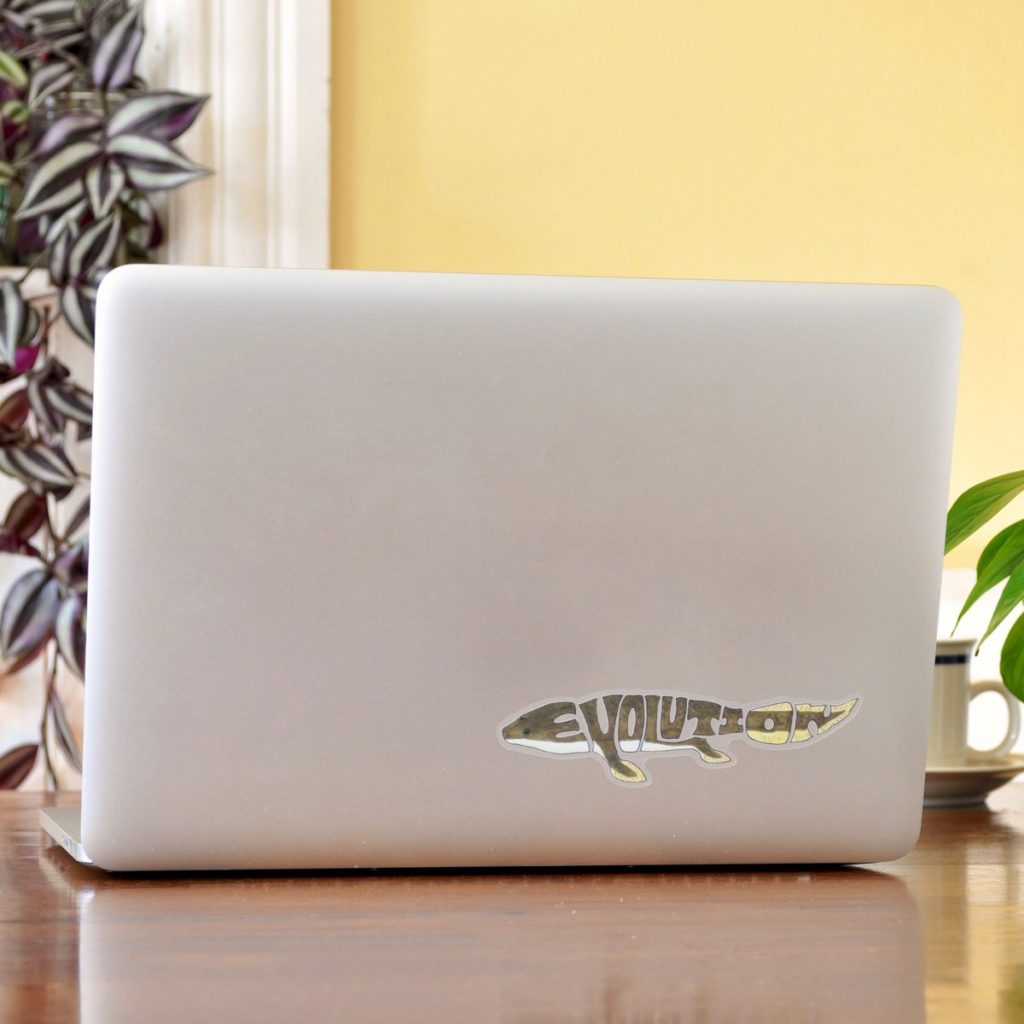
There is, unfortunately, considerable and longstanding resistance to the theories and implications of evolutionary biology. But we believe in the power of dialogue and storytelling to change hearts and minds and we hope that Tiktaalik Spells Evolution can play its own small part in sparking that dialogue by literally putting a face on evolution.
Like our Tiktaalik Spells Evolution design, our silhouette mosaic designs are a great example of how we are turning our passion for anatomy into designs that celebrate the diversity of life on Earth. The design Diversity on the Wing, for example, showcases 42 different species of birds, artfully arranged to form a larger silhouette of an eagle in flight. At over 10,000 species, this represents just a fraction of a percent of bird diversity. But it still captures the wide range of behaviors, ecologies, and forms of birds. Available as a sticker or greeting card, we think this design is the perfect way for birders or bird enthusiasts to share and show off their love for birds and bird diversity.

In addition to stickers, we have also created handmade greeting cards featuring our custom designs. In this digital age, handwritten notes are all the more meaningful. They show a level of thoughtfulness that just can’t be achieved with an email or a text. Even generations adept at digital communication recognize this: millennials buy more greeting cards than any other generation.
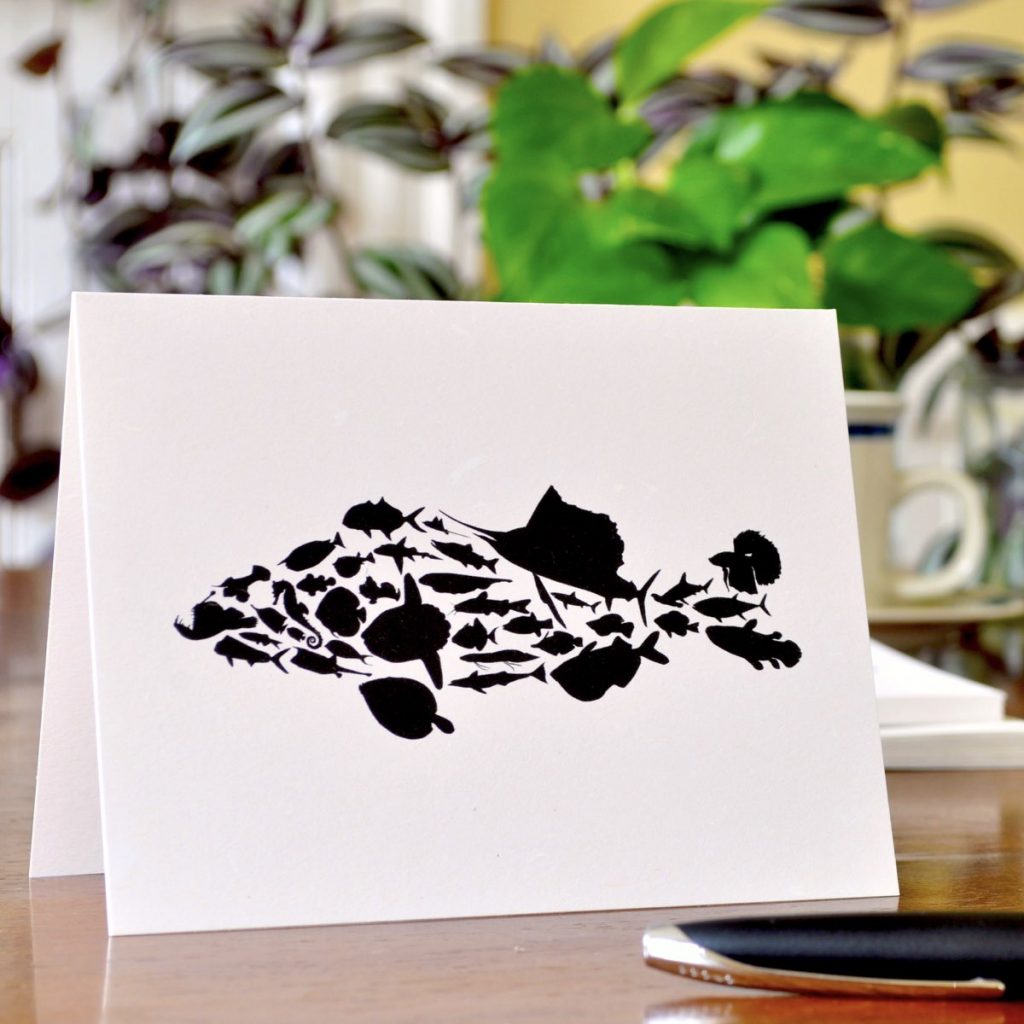
Collectively, the members of 3D Anatomy Studios have studied a wide range of organisms, including snakes, sharks (both extant and extinct), goby fishes, non-human primates, waterfowl, South American freshwater fishes, and catfishes, and bluegill sunfish. But as you can tell from that list, fishes are overrepresented when it comes to our previous research experience (but, we have to note, in proportion considering their diversity among vertebrates!). So we were particularly excited to share the design Diversity in the Fish Body on social media, where we also have a substantial fish following. Our Fish diversity greeting cards give anyone on #TeamFish the opportunity to share their love of fish with colleagues, friends, and family. Designed by member Michael Fath, these cards feature the silhouettes of 36 different species of fish that together form a larger trout-shaped silhouette.
While our stickers and greeting cards reflect our work in 2D illustration and design, our first 3D printed products demonstrate our first efforts in using 3D digital and physical model design to make new educational resources available for anatomy and physiology. Besides, as a business named 3D Anatomy Studios, we couldn’t open our shop without at least some 3D products!
Back in the summer of 2021, before we even started building 3D models or other resources, we realized that we first needed to collect data. While there have been extensive efforts in the past few years to document life on earth (e.g., the oVert and Digital Life projects), there were still little to no data available for the animals most commonly used as dissection specimens to teach vertebrate and human anatomy. We needed data to ensure that any resources we developed were based on anatomy from real specimens. So we started documenting the anatomy of these animals and openly shared the data on social media and MorphoSource.
One of the first species that we focused on was the spiny dogfish shark. This species is commonly dissected in vertebrate anatomy classes to help students understand the many traits that are shared between fish and humans as a result of our common evolutionary history as jawed vertebrates. But there is so much to these sharks that students never get a chance to see and feel. For example, the teeth in these sharks are just a few millimeters long, not large enough to see in any detail. Not only that but the preservation process makes it impossible to open the shark’s mouth to expose the teeth.
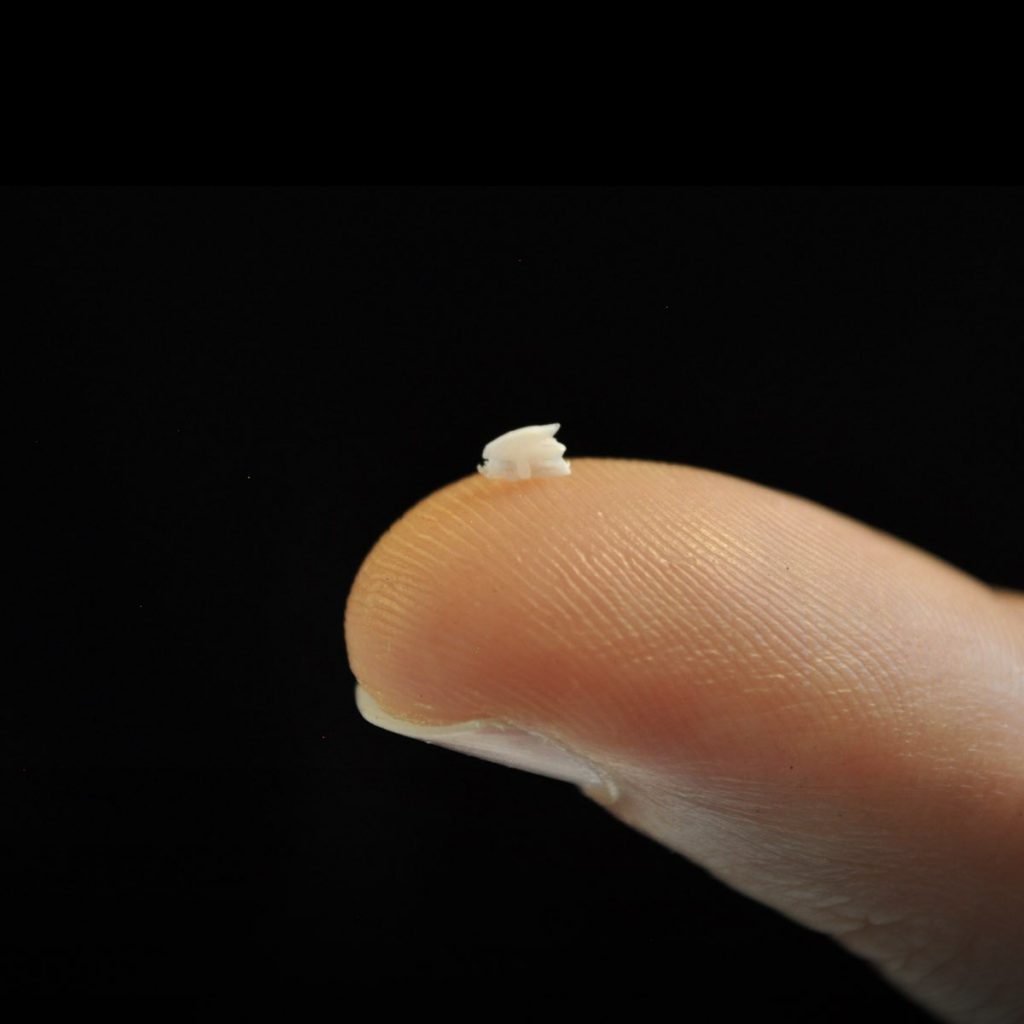
So, using a dissecting microscope, we took photographs of dogfish shark teeth from multiple angles at high magnification.
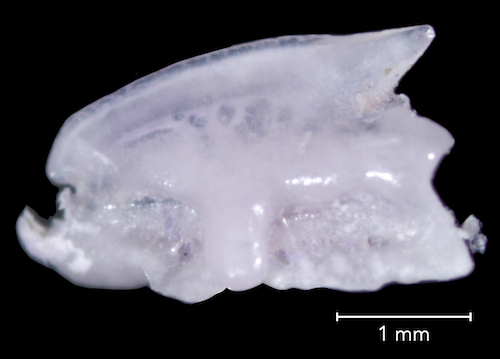
We then used those photographs as reference images to sculpt a 3D digital model in the 3D design software Blender. And we used our 3D printers to turn that digital model into a physical model. The result is one of our first 3D printed products, a 20X-larger-than-life dogfish shark tooth.

This 3D printed model allows students to see and feel, for the first time, the teeth of an animal that has been used for decades to teach vertebrate anatomy. Given that sharks are used to illustrate the shared traits of jawed vertebrates, we think having a resource related to their jaws is pretty important! Another reason we think this model is a valuable resource is to make the point that there is a lot of diversity within sharks. When most people think of shark teeth they probably think of the triangular, serrated teeth of white sharks (aka great white sharks). Our dogfish shark tooth model is a reminder that even though we may use sharks to understand traits that go back to our earliest common jawed vertebrate ancestor, sharks have also been evolving over hundreds of millions of years, diversifying into many forms, behaviors, and ecologies.
Building direct relationships with our customers
When we first had the idea of selling our designs on physical products, we had to decide whether we wanted to actually create (or order) those products and ship them out ourselves or have a third-party business do that for us (called “drop shipping”). Drop shipping is a great value to a creator that is just getting started. All you have to do is create an illustration or design and upload it to a website. The drop shipping company then takes care of everything else (e.g., manufacturing, orders, fulfillment, returns) and you get a cut of the sales. Of course, the drop shipper takes a substantial cut, but they’re doing a substantial portion of the work in fulfilling orders.
We initially thought drop shipping made the most sense since we were a new business with limited space and personnel for keeping inventory, fulfilling orders, etc. We planned to get to that point eventually. But if we could get some initial sales before then, it would help us start bringing in income. So we decided to give Redbubble a try, a leading drop shipping company that had generally good reviews, a great web interface, and more products than we could possible want to place our designs on (we would not be surprised if you could order a kitchen sink with a custom design printed on it!). We started ordering some test products with our designs (e.g., a t-shirt, sticker, magnet, cotton tote, mask) to make sure that the quality was high enough for us to sell.
Unfortunately, we were not entirely satisfied with the outcome of these test products. To start with, the quality was inconsistent (the magnet was great, the rest of the products not so much). But we learned that Redbubble does not necessarily contract with the same manufacturer for a particular product each time it is ordered. That is, if we ordered a custom magnet to test out the quality and another customer in a different part of the US or another country ordered the exact same magnet a few weeks later, those two magnets could be made by a different manufacturer. Even worse, the manufacturers are completely anonymous – you have no idea who is making the products. We presume this is so that designers don’t circumvent Redbubble and establish their own direct relationships with a manufacturer.
The more we learned, the less comfortable we felt going down the drop shipping path. We realized that our custom designed stickers might be the first product that someone buys from us and we wanted to make sure that their first experience with us would be enjoyable and memorable. And rather than having our customers placing orders through a third-party we wanted to connect directly with them ourselves and begin building those relationships. If anything did not meet their expectations, we wanted to make sure that we could immediately resolve any issues and make improvements.
So we decided to completely shift gears and create a shop on our own website. This meant that we had to order the products directly from manufacturers or create them ourselves, add a shop to our website, take our own product photos, create product pages, and set up a system for receiving, fulfilling, and shipping orders. All of which delayed the opening of our shop for several months.
However, having our own shop means that we ensure quality at every step and that we have our own space to sell any product we like. For example, we were able to order fantastic vinyl stickers from a manufacturer that specializes in stickers (StickerYou) and have tested out all of the stickers ourselves. We took all of our product photos ourselves so you can see exactly what our stickers would look like on your own water bottle or laptop (we didn’t just photoshop the stickers in like many online custom sticker sellers do). And we could not have found a third party company that could manufacture and ship our custom 3D anatomy prints. Since 3D printed products are a key area where we are planning on expanding in the coming months (stay tuned for more on that in our May update!) we are excited to lay the groundwork for that by having 3D prints available for sale from day one.
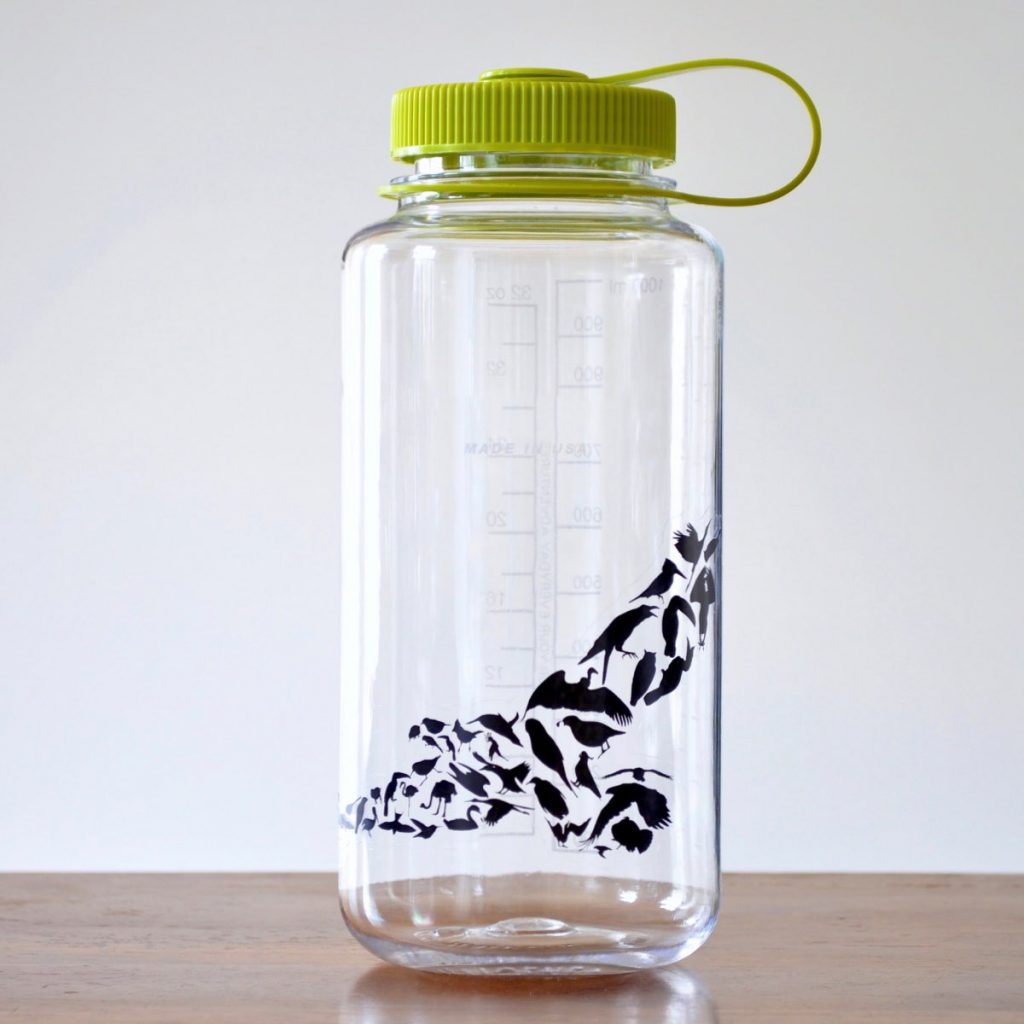
Sustainability starts with our first order
Environmental sustainability is one of our core values at 3D Anatomy Studios and the way in which we run our shop reflects many decisions that we have already made to reduce our negative environmental impact. As biologists, we are aware of all the ways in which humans have negatively impacted and continue to negatively impact the Earth. We are also deeply aware of how much humans depend on and benefit from healthy ecosystems. As a result, we feel an ethical duty to ensure our small business at the very least minimizes its negative impact on the environment. And if we are truly to change humanity’s destructive course, we must go beyond future harm reduction and actively contribute to reversing previous negative impacts and restoring ecosystems. Particularly as a small business dedicated to advancing the understanding of Earth’s many fascinating organisms.
In the course of opening our shop we were confronted with many decisions, most of which really came down to a simple choice: do we go with the easier, cheaper option that is worse for the environment or do we go with the more difficult, expensive option that is better for the environment? A great example is the cardstock that we used to make our greeting cards. “Virgin paper” (paper made from new raw materials rather than recycled content) has a significant negative environmental impact. Yet, it is actually quite difficult to find cardstock that is made from 100% recycled paper. I stopped at an office supply company and a local paper supply company here in Rhode Island to see if they had any 100% recycled cardstocks – neither had any cardstock made from recycled content. When I asked why, the salesperson at both businesses told me, “People have never asked for it.”
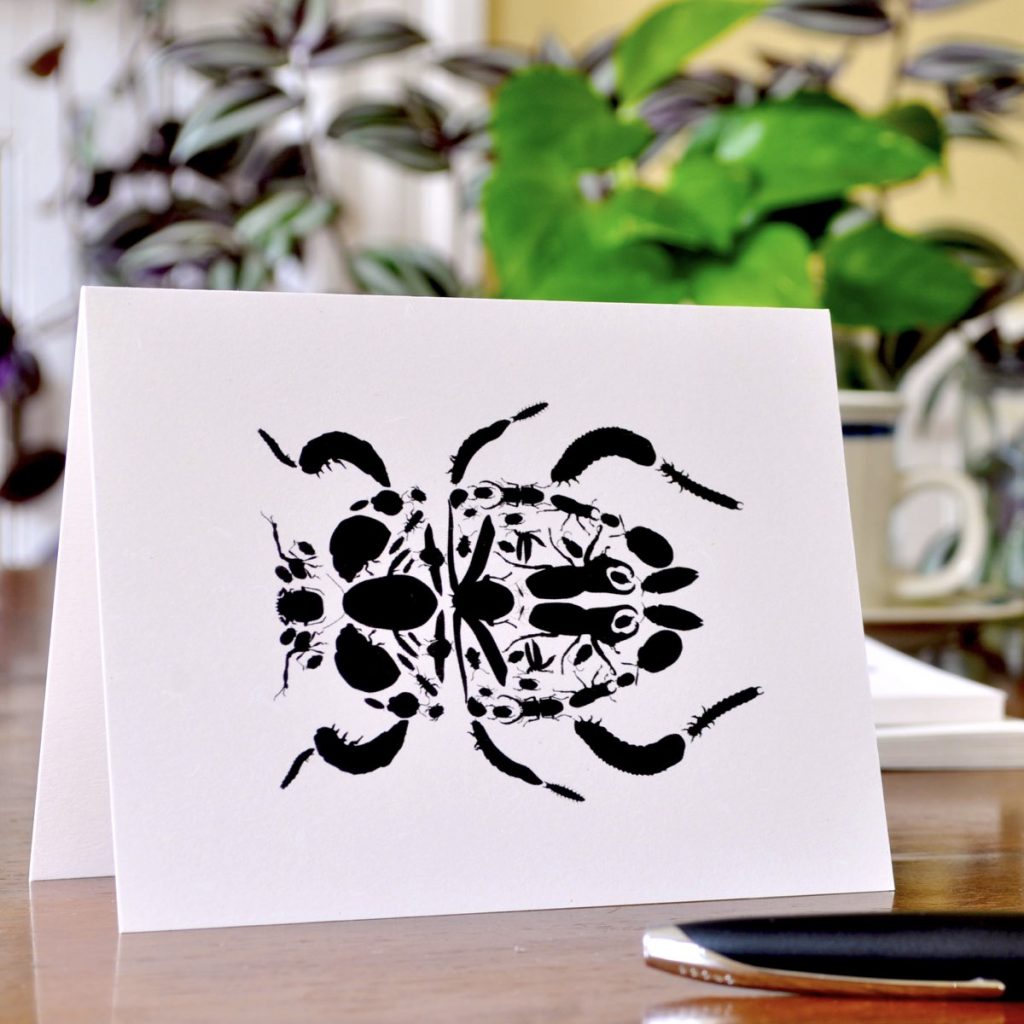
For our first run of greeting cards we were finally able to source a 100% recycled cardstock, “Curious Particles Snow” purchased from The Paper Mill Store. It’s a beautiful paper, with a pleasant surface texture and flecked appearance. But given the apparent low demand for paper made from recycled content, we aren’t entirely sure that we’ll always have easy access to this particular paper or others like it. It will take more small businesses like us (and consumers) insisting on paper products made from recycled content to change the industry.
Another great example of the choice between cheap and easy vs. eco friendly were all the decisions we had to make in deciding how to package our products. Whether to use cardboard boxes or “plastic poly mailers,” whether to use standard or compostable stickers for our company branding (most stickers are neither recyclable nor compostable), whether to use glossy wrapping paper or compostable twine for gift wrapping (glossy paper is almost never made from recycled content), whether to use bubble wrap or crumpled paper, etc. The volume of decisions and choices was daunting.
Something that was instrumental in helping us make these decisions was finding the phenomenal company EcoEnclose. Not only do they provide environmentally sustainable packaging products, they also provide extensive information through their website on how to make packaging choices and why certain products are a better choice than others from a sustainability perspective. We have sourced all our packaging, and various other supplies, from EcoEnclose, which has enabled us to say that nearly everything we ship to customers is made from 100% recycled materials and is either compostable and/or recyclable.

As a new small business, we recognize that we are a small drop in a large ocean. But we didn’t feel comfortable making the excuse that “we’re too small to make a difference” or “we’ll make more sustainable decisions if we grow larger.” The first decisions that we make have a way of influencing all future decisions and it gets harder and harder to change course the further down a particular path you go. That’s why we have given so much thought to sustainability even before we receive our first order. We’re setting the precedent that we are dedicated to continually increasing our sustainability and we believe that our customers will support us in that goal every step of the way.
What’s Next?
Needless to say, what you see in our shop now is just the beginning. We’re busily working on exciting new products that we’ll be releasing in the coming months. This includes active learning resources that combine 3D printed models and magnets and digital anatomy resources of structures never before made available in digital form. In May we’ll give an update on these products so, if you haven’t already, follow us on social media (on Twitter, Instagram, or Facebook) to make sure you don’t miss it. Thank you for following our progress and we wish you a happy rest of your April!
Written by Aaron Olsen
Edited by J.D. Laurence-Chasen
We wish to thank Elizabeth Brainerd at Brown University for the use of her dissecting microscope, which we used to take the shark tooth image featured in this post. Any companies other than 3D Anatomy Studios named in this post are mentioned solely for editorial and informational purposes. These companies do not necessarily endorse the content of this post or website. We have not received a commission, discount or any other benefit (monetary or otherwise) in exchange for naming them in this post.









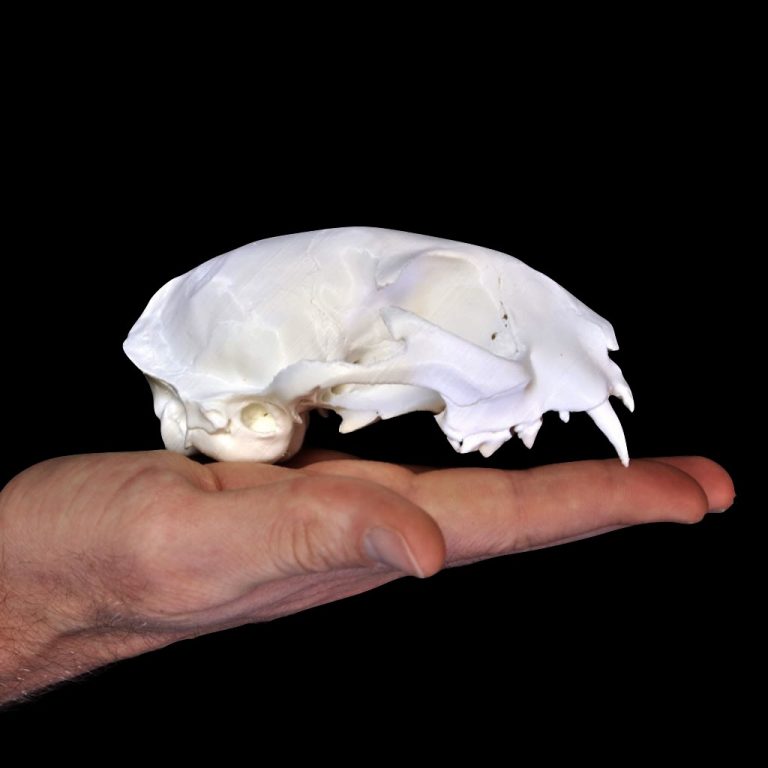
How can I get information on the shark cranial nerve model I saw on your Instagram page?
Hi Alicia! Thanks for the questions! You can find more information on our main Shark Skull Active Learning Kit page. If you have any further questions, please just email us at contact@3danatomystudios.com!